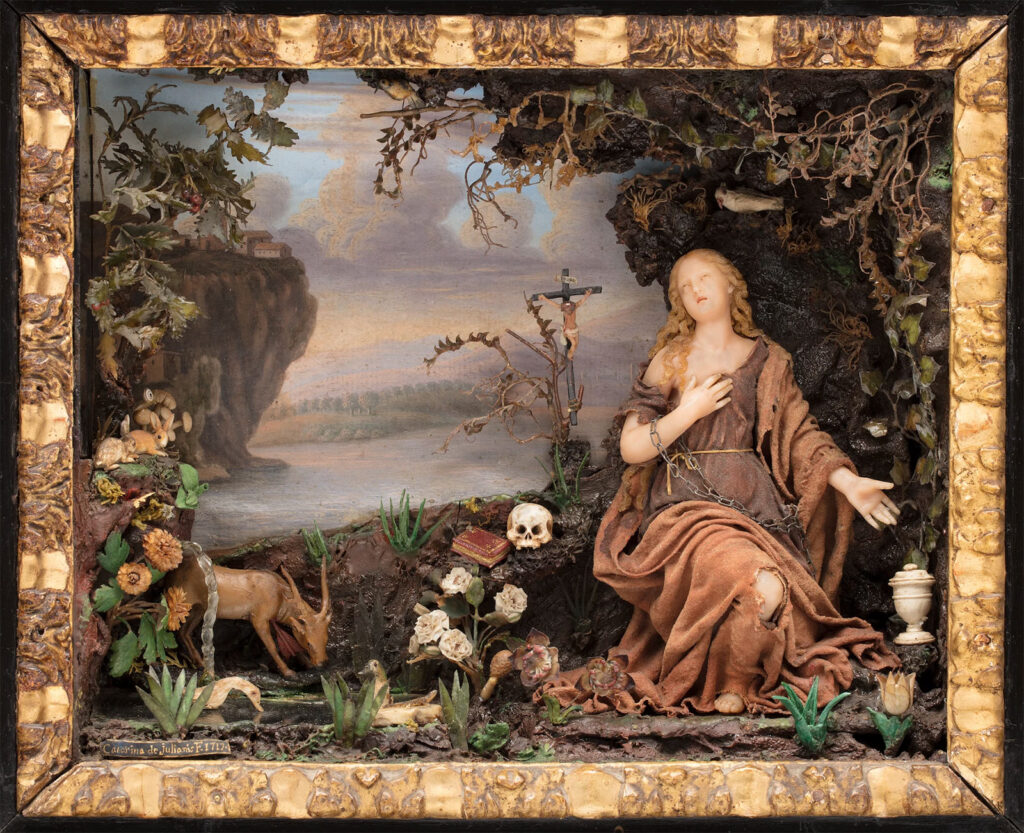Waxing and Waning: The Life and Art of Caterina de Julianis
Grace Ann Arulanandam
Advisor: Dr. Ann Johns

Abstract
Caterina de Julianis was a 17th-18th century Neapolitan nun whose work has yet to be collectively analyzed. She created lifelike wax miniatures in elaborate dioramas; her surviving work, Penitent Magdalene, is only 10 9/16 x 10 5/8 inches. Julianis’ work is detailed and depicts religious devotion to rotting corpses. The macabre and divine added to the memento mori tradition of the Baroque. Julianis’ miniatures are immaculately finished and include different materials such as feathers, plant matter, and silk. Her work is among the wax miniature traditions observed in Sicily and Naples. However, wax art has been ignored as a decorative art and even denigrated from works of art to specimens. For example, artwork by Giulio Gaetano Zumbo, Julianis’ mentor, was moved during the 20th century from the art museum, the Bargello, to the natural history museum, La Specola, full of anatomical wax models.
Prior research on Julianis is scant, but art historian Jane Eade has questioned if Julianis was a nun. To this point, the earliest record of Julianis, Vite de’ pittori, scultori ed architetti napoletani by Bernardo de Dominici in 1743, does not mention her being a nun. I will explore the opportunities afforded to women in the 17th-18th century and theorize what Julianis’ life was like.
Waxing and Waning: The Life and Art of Caterina de Julianis is the first attempt to holistically analyze Julianis’ work and provide insights into how miniatures are categorized in art history and how they were viewed and interpreted in museums and churches.